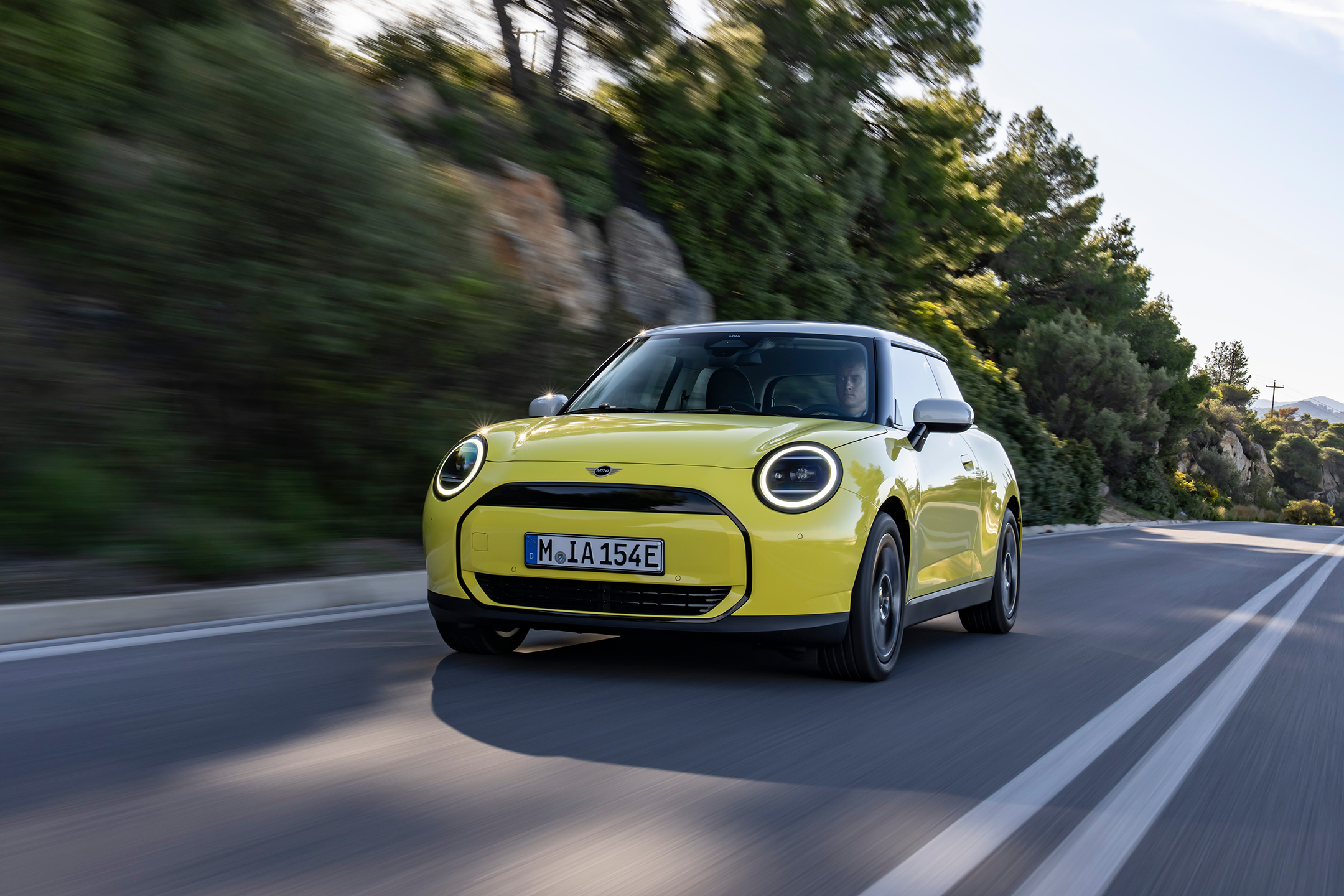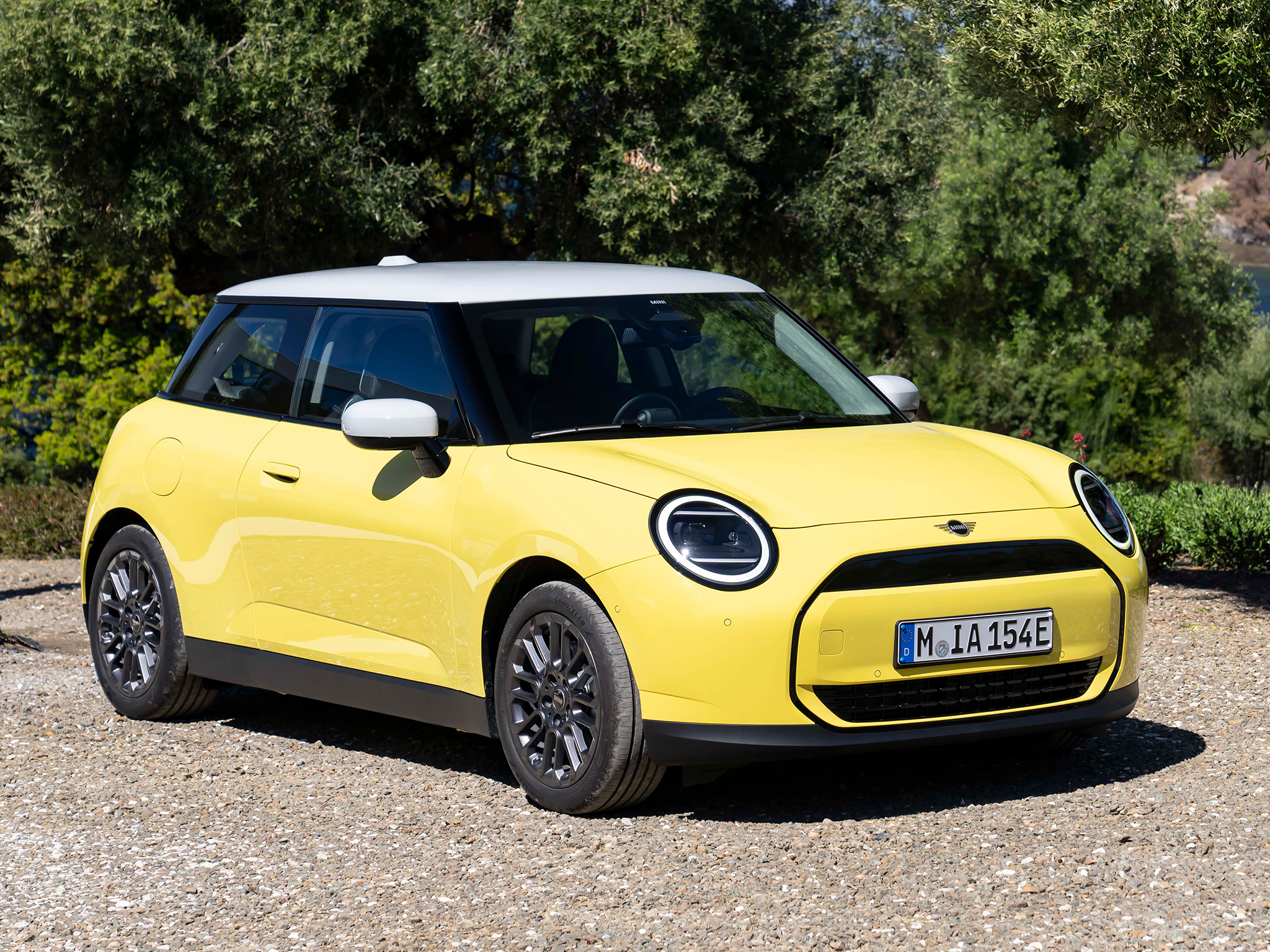Mini Cooper review: Proof that electric cars can be fun to drive
All-new electric Mini Cooper is available in two distinct versions. Both are huge fun to drive and offer a cleaner, smarter aesthetic over their predecessor. Slow charging is a letdown.

Your support helps us to tell the story
From reproductive rights to climate change to Big Tech, The Independent is on the ground when the story is developing. Whether it's investigating the financials of Elon Musk's pro-Trump PAC or producing our latest documentary, 'The A Word', which shines a light on the American women fighting for reproductive rights, we know how important it is to parse out the facts from the messaging.
At such a critical moment in US history, we need reporters on the ground. Your donation allows us to keep sending journalists to speak to both sides of the story.
The Independent is trusted by Americans across the entire political spectrum. And unlike many other quality news outlets, we choose not to lock Americans out of our reporting and analysis with paywalls. We believe quality journalism should be available to everyone, paid for by those who can afford it.
Your support makes all the difference.The all-new Mini Cooper is proof that electric cars can be fun to drive. It still looks and feels like a Mini, but one that has grown up a little, with a clean, neatly resolved exterior and an unfussy cabin that benefits from smart uses of recycled fabrics and projected ambient lighting. The circular dashboard display is sharp and very responsive, but takes some getting used to, while we’re thankful for the handful of physical controls that remain on the wheel and below the centrepiece display.
Some drivers (and passengers) might not like the relatively firm ride of the Mini Cooper, but those who enjoy driving will appreciate the way it handles in the bends. There’s a decent turn of pace, too, and while they can be switched off, the car’s many sound effects show it’s an EV packed with character. We wish it would charge more quickly – 75 kW for the base Coope E really isn’t great – and, being a Mini, it quickly gets expensive when you dive into the options list.
How we tested
I spent a day driving both the Mini Cooper E and Cooper SE through the Oxfordshire countryside. This included driving in town traffic, as well as tackling A- and B-roads of varying quality, and testing the new Mini’s efficiency at higher speeds on a dual-carriageway.
Mini Cooper E: From £30,000, Mini.co.uk

Independent rating: 7/10
- Pros: Fun to drive, revamped interior, attractive OLED touchscreen
- Cons: Limited range in Cooper E guise, slow charging, software has a steep learning curve
- Price range: £30,000 to £34,500
- Battery size: 36.6 kWh or 49.2 kWh
- Maximum claimed range: 182 to 249 miles
- Miles per kWh: 4.2 to 4.4
- Maximum charging rate: 75 to 95 kW
Battery, range, charging, performance and drive
Arriving in the summer of 2024, the fourth-generation ‘new’ Mini represented a major upgrade to its EV credentials. It’s still a car best-suited to shorter journeys – and for putting a big smile on your face, which it does with ease – but the benefits of larger batteries and more powerful motors are felt.
Firstly, there are two distinct models of electric Mini hatchback to pick from. The Cooper E has a 36.6 kWh battery, 179 bhp, a range of 182 miles and a 0-62 mph time of 7.3 seconds. The Cooper SE has a larger 49.2 kWh battery, produces a more potent 212 bhp, has a longer range of 249 miles and sprints to 62 mph in 6.7 seconds. The SE also charges more quickly, with a maximum rate of 95 kWh compared to just 75 kW for the Cooper E. But since they have different capacities, both take about 30 minutes to charge from 10 to 80 percent.
The SE is noticeably quicker, especially when accelerating from low speeds, but both versions are fun to drive. They weigh more than ever, but still have the agility Minis are famous for – and, yes, there’s still ‘go-kart mode’, which now cranks up the synthetic motor sounds played through the stereo.
Interior, practicality and boot space
The clue’s in the name, but there’s actually more space in here than before. The rear seats feel like they’re actually made for adults, and are perfectly functional for short journeys. Up front, the Cooper feels more grown-up than ever. Its cabin has undergone a significant overhaul, with the dashboard now dominated by a circular, 9.5-inch OLED screen.
We like how the recycled knitted fabric gives the dashboard and door panels a subtly retro look, while also being illuminated by light projectors and how the steering wheel has tactile buttons. Physical controls also include a toggle switch for moving between drive modes, and a key-like rotating switch to turn the car on and off.
There’s a decent amount of storage on offer, visibility is good and the seats are comfortable. The cabin is more spacious than you’d think, but this impression is aided by the optional glass panoramic roof, and the boot is just 200 litres, with no storage under the bonnet.

Technology, stereo and infotainment
The big story here is the Mini Cooper’s new, circular infotainment display. This handles everything, from media and navigation, to vehicle settings, speed, gear and battery charge. Controversially, there is no display or instrument cluster ahead of the driver, although Mini offers a large, full-colour head-up display (plus heated front seats, upgraded headlights and a wireless phone charger) as part of the £2,000 Level 1 kit.
The operating system takes some getting used to; more so than many other cars. But it’s pleasingly designed and the whole thing switches to a different visual theme when you change drive modes. One such mode gives it the vintage look of an original 1959 Mini. It’s all rather fun, and the OLED panel is seriously slick, but you’ll likely still plug your phone in and use Apple CarPlay or Android Auto instead.
Lastly, a Haman/Kardon sound system is included with the £4,500 Level 3 kit, which also includes the pano roof, 4G connectivity and a clever augmented reality element to the head-up navigation system.
Prices and running costs
The 2024 Mini Cooper E starts at £30,000 and the sportier SE costs from £34,500. But that only tells half the story, because as ever with Mini, you can spend an awful lot on upgrades and extra kit. Add on all of the sporty John Cooper Works kit – which is purely a visual upgrade, since a fully-fledged JCW performance model will be along later – and you’re looking at over £42,000. The three-door Cooper hatch undoubtedly feels more premium than ever before, but that’s a significant price to pay.
Running costs will be cheap, of course, given this is an EV and at-home charging significantly undercuts the price of petrol or diesel. Beware of high-speed motorway chargers though, as these can charge significantly more per kWh than other options. On that note, since the Cooper can only handle up to 95 kW charging, there’s no need to seek out a rapid charger offering 100 kW or more.

Mini Cooper E rivals
FAQs
How long does it take to charge?
The entry-level Mini Cooper E charges at just 75 kW, while the Cooper SE manages 95 kW, but because they’re batteries differ in size they both take about 30 minutes to fill from 10 to 80 percent on a public charger. A three-figure charge rate for both would have been welcome.
How much does it cost - is it worth it?
Mini Coopers have always commanded a premium over similarly-sized hatchbacks, and the same is true here. Prices start at £30,000 but can easily exceed £40,000 if you go for the quicker Cooper SE and get greedy with the options list. But, as ever, the Mini feels like a premium car, and the interior of the latest generation is especially impressive.
Is there a petrol version of the new Mini Cooper?
Yes. In fact, there are two. They’re called the Mini Cooper C (from £23,150) and Mini Cooper S (£27,550), and while they look almost exactly the same as their electric siblings, they are based on entirely different platforms. The easiest way to tell? The door handles of the EVs are flush with the body, while those of the petrol cars are more conventional. Try that one out at your next dinner party.
The verdict: Mini Cooper E
I loved driving both electric versions of the new Mini Cooper. They look great inside and out, and are seriously fun on a winding country road. However, they charge slowly and prices quickly ramp up.






Join our commenting forum
Join thought-provoking conversations, follow other Independent readers and see their replies
Comments